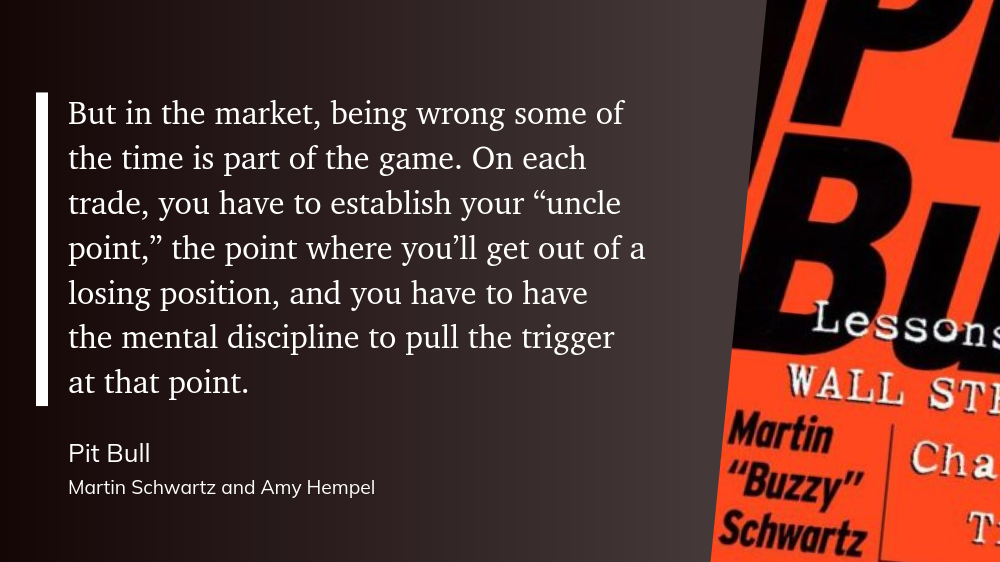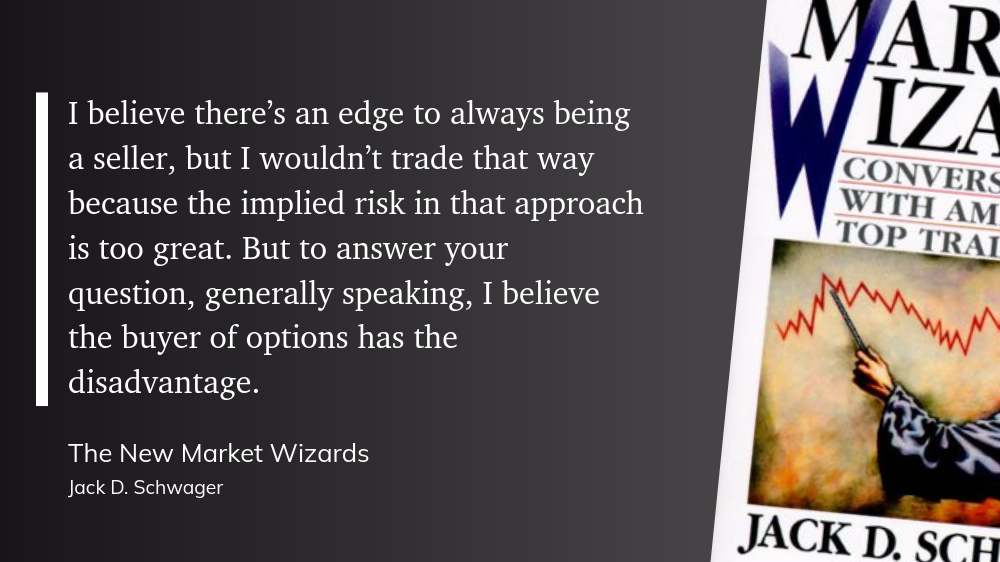To sell puts, or not to sell puts, that is the question
I'm re-thinking my primary trading strategy going forward in an effort to better manage risk and focus on my trading psychology. 🧠

I've learned a lot of lessons in the stock market the hard way. I've chased meme stocks, I've had terrible position sizes when things went badly, and I've taken trades off the board that turned profitable the next day.
However, as I started to learn more about options, I was entranced by all of the math and probabilities involved. These probabilities are constantly in flux as market volatility and underlying prices ebb and flow. It felt great to gauge all the probabilities, put a trade on the board, and know at that moment that I'd made the best trade based on the probabilities available.
Then things change. Markets move. Probabilities move even faster.
If you're looking for chart reviews, this isn't the post for you! If you're looking for someone else's introspection into how they trade, keep reading! But first:
All investments come with significant risks, including the loss of all capital. Please do your own research before investing, and never risk more than you are willing to lose. I hold no certifications or registrations with any financial entity.
Let's get into it.
Every trader has losing trades
Van Tharp was a trading coach who wrote multiple books and was featured in the Market Wizards series of books by Jack Schwager. (These are excellent, must-read books for any trader.) He talks a lot about market psychology and notes that most traders spend the majority of their time on finding the right trading setup – the best time to open a trade. However, he notes that very little time is spent on everything that happens after that moment, such as:
- When do you exit?
- When do you add to your position?
- When do you cut your position back?
- How do you monitor your positions over time?
- How do you keep yourself from altering the plan you made when you opened the trade?
Every type of trade has a potential of losing with even the best setups. That includes trading options and shares on either side (long or short). The only thing you truly have control over is how much you risk on the position.
In Van Tharp's model, he talks a lot about R, or the risk involved in the trade. For example, if you buy 100 shares of a stock worth $100 per share with a stop loss at $90, you're committing $10,000 of capital to the trade, but your risk is only $1,000. Your stop loss should prevent you from losing more than $10/share, or $1,000 total. (I say should here because quick overnight moves and fluctuations in liquidity will limit your ability to sell when you expect to.)
In this case, 1R is $1,000. You measure your gain based on the R value. Ideally, you want a trade that is a 3:1 ratio of reward to risk. That trade is 3R. If your $100 stock rallies up to $130 and you exit, you got 3R. If the stock runs to $90 and gets stopped out, you got -1R.
Risk to reward on short options trades is rough
I love how you can quantify your risk based on probabilities with short options trades using various measures, such as delta and vega. Your trade with a 70% chance of being profitable can turn into a 20% chance of profit in a flash due to moves in the underlying stock or changes in volatility.
So if you sell a $90 put on a $100 stock for $2.00, you're risking $10K of capital to potentially make $200. Your gains are capped, but your losses are not. If the stock falls through $90 and reaches $80, your $200 in premium starts to look very paltry in comparison.
In essence, a short put trade is a bet on probabilities with a very large risk. The worst case scenario is the stock running to zero and you collect $200 in premium as you stand over a $9,800 loss.
Downside risk is compounded
When you buy shares and the stock drops 10%, you lose 10% of your bet. In our previous example, buying 100 shares of a $100 stock puts $10K of capital at risk. If the stock runs to $90, you're down $1,000, or 10%.
With options, things get a little hairy. You'll be down somewhere around $1,000 immediately because the underlying price moved against you and your deltas (the measure of how much the options price moves based on the price of the underlying stock), but you'll be down a little extra because the volatility of the particular stock increased. Remember that volatility causes the range of deltas to expand.
This volatility can become brutal when the entire market volatility increases along with the volatility of your particular stock. You're forced to deal with losses in three areas:
- Underlying went down in price and your deltas increased
- The stock's volatility increased
- The overall market's volatility increased
But now you're in a tough spot. If you abandon the trade here, you immediately take a loss on the change in the underlying (somewhere around $1,000 in our example), but you take an additional loss from the increase in volatility. You might say "well, the stock will come back, and if it doesn't, the volatility will settle down and my loss won't be so awful." Now you're letting a loss run longer and opening yourself up to more losses.
This also leads into one of my biggest complaints about short options: One trade that goes against you horribly is enough to eat up several (or all) of your winners. Mark Minervini writes that one of the best ways to succeed in the stock market is to let winners run and cut losers immediately. A smaller number of larger winners can more than make up for a larger number of small losses.
Stop losses don't work
One of the main reasons why stop losses work so well on stocks is that there's often a lot of liquidity and the bid/ask spreads are fairly close together (if you're trading in a popular stock). Even on the most popular stocks, options markets can get very wide. Good-to-close stop losses on stocks will usually only execute when the price gets close, but options markets swing wildly at the market open and stop losses can be hit at horrible times.
So if you can't set a mechanical stop loss order, you're left with a mental stop loss order. You set an "uncle point" where you manually close the trade, but as mentioned in the previous section and as Martin Schwartz writes, it's really difficult to maintain that level of discipline:

As you examine the chart and note your uncle point, you must accept the loss from the underlying and the volatility and close the trade.
Constant in-and-out
Getting into a trade and staying in that trade is difficult. Stocks move around with lots of shake out points where traders without a good plan will often exit just before the rally begins. When you sell short puts, your profit from upward moves is always capped. This means your potential return dwindles even as the stock rallies.
For example, if you sell a $100 put for $2.00 and the stock rallies, your put might be worth $1.00 and you made $100. Then the stock rallies more and you make $50 more. There's only $50 left to be made in that trade but you're still assuming all of the downside risk to squeeze out that last $50 of premium.
Many will exit earlier, perhaps at 50% gain. That's a constant recommendation from the traders at TastyTrade. But then you're stuck with a problem: Do I open another short put a little higher, assume more downside risk, and make a little less money since the volatility on the stock likely dropped during the rally?
It seems like the only people consistently making money with the constant in-and-out of these trades are the brokerages.
With that said, TastyTrade has an all-day TV network with lots of traders making lots of trades. These traders often make trades based on volatility metrics without much thought to technical analysis or relative market performance. They make it look easy, but then the vast majority of them are not sharing their profit and loss across their portfolio. Very few disclose the quantities they are trading, either.
Leverage looks great until it's awful
On margin accounts, trading short puts allows you to do a lot more with your money. Short puts take up very little margin and when you enable portfolio margin, you can get leveraged even further. When your trades are working well, this can be a huge multiplier for profits. It can also be a huge magnifier for losses.
To be fair, it's easy to get over-leveraged with shares. Margin requirements are higher when you hold shares so you can't get as leveraged as you could with options.
Options pricing errors are more rare in the modern era
In the Market Wizards books, Jack interviewed Blair Hull and he talked a lot about options being horribly priced in the early days. There was a ton of money to be made from shorting options that were much too high in price, but he notes:

Note that the seller has the advantage but also much more of the risk. Later on, Jack asked him more about the long side:

So yes, there's a bias towards options being overpriced, especially when the market is volatile. However, going short on those options contracts means assuming a lot of risk if you're wrong.
Summary
Trading shares has plenty of risk, but I've slowly come around to realize that selling options is difficult to maintain over longer periods. One big loss can quickly eat up plenty of smaller wins and it's not possible to get "a runner" that brings about an outsized profit from time to time. Exiting in a bull market is easy, but it's extremely difficult in a choppy or falling market.
In addition, options liquidity means you can only trade short options on a limited amount of stocks. The only thing worse than sitting on a loss is watching your loss grow because the options liquidity dropped so much that you take a larger loss just to exit the trade.
There are lots of people making great money consistently in selling options! They are smart, talented traders who understand their risk and trade accordingly. It's a great trading vehicle for some, but I've come to realize that it's not for me.
I'm still grateful for everything I've learned since 2020 in the market and I owe plenty of thanks to two great groups I've traded with:
- Theta Gang: My first true trading group. This is the best group of traders on the planet and it's a group who really cares about each other. Joonie reeled me in with his Theta Gang podcast during the pandemic and we have a strong core group in Discord with new members sharing their ideas frequently. I'll stay in this group until they kick me out. 😆
- Volume Leaders: The Discord is relatively new, but I've been a member of the site for a few years. They drag out some excellent data that is normally buried in the stock market. You can spot levels where traders are making huge trades and plan your own trades accordingly. Bruce runs the site and the Discord group and he's super resourceful and patient. Alex, Mike, and Joe do a great job sharing what they know, identifying trades, and dishing out "tough love" when traders could do better.
Long story short: I'm not going anywhere. The markets offer an unlimited stream of opportunities to learn, improve your psychology, and occasionally make a little money. I love digging into intermarket analysis and looking for trades with a high probability of success. You'll just find me talking a lot more about shares and market mechanics rather than selling options. 😜
Good luck to everyone in the market this week. 🍀


Discussion